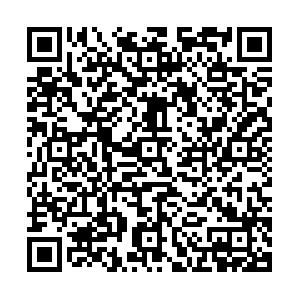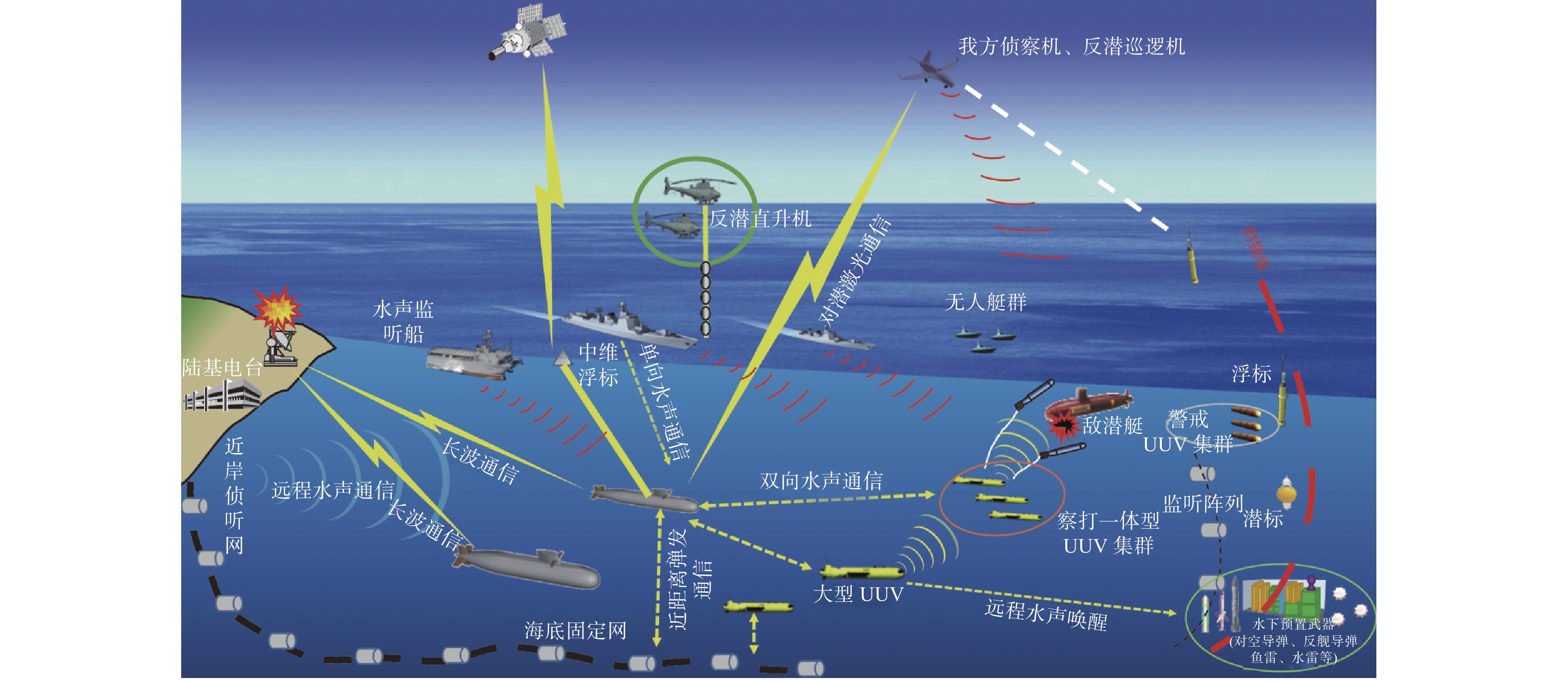Effectiveness Evaluation of Intelligent UUV Target Recognition and Counter-contermeasure Based on TOPSIS with Weighting Combination
-
摘要: 随着水声对抗作战环境日益复杂, 未来水下作战的重点主要是智能水下无人系统的对抗与反对抗, 研究智能无人水下航行器(UUV)目标识别与反对抗能力对提高智能水下无人系统的整体作战效能具有重要意义。为了评估智能UUV目标识别与反对抗效能, 文中分析了影响系统效能的主要因素, 建立了系统效能指标体系, 并给出了评估模型; 运用主客观相结合的组合赋权方法确定指标体系的权重, 采用改进的逼近理想点法对智能UUV目标识别与反对抗效能进行评估, 评估结论可为UUV目标识别与反对抗系统设计与优化提供参考。Abstract: At present, the operational environment for underwater acoustic contermeasure is increasingly complicated. The emphasis on future underwater warfare is mainly focused on the contermeasure and counter-contermeasure of intelligent underwater unmanned systems. The research on intelligent unmanned undersea vehicle(UUV) recognition and counter-contermeasure capability is of great significance for improving the overall operational effectiveness of intelligent undersea unmanned systems. In order to evaluate the target recognition and counter-contermeasure effectiveness of the intelligent UUVs, the main factors affecting the system effectiveness were analyzed, and the effectiveness index system was established. The evaluation model was also proposed. The weight of the index system was determined by the combination of subjective and objective weighting methods, and the target recognition and counter-contermeasure effectiveness of the intelligent UUVs was evaluated by the improved technique for order preference by similarity to ideal solution(TOPSIS). The evaluation conclusion can provide a reference for the design and optimization of the UUV target recognition and counter-contermeasure system.
-
表 1 UUV目标识别与反对抗指标数值表
Table 1. Numerical table of UUV target recognition and counter-countermeasure index
指标 ${Y_1}$ ${Y_2}$ ${Y_3}$ ${Y_4}$ 等效搜索范围/m 1848.2 2177.4 1921.7 2283.8 自导作用距离/m 1517.6 1661.6 1347.3 1564.3 探测扇面/(°) 75.0 88.0 75.0 88.0 目标捕获距离/m 1870.4 1715.4 1577.9 1430.8 目标捕获时间/s 83.5 79.6 80.6 62.4 目标捕获概率/% 85 86 91 95 UUV航程消耗/km 7.1833 8.3654 5.3256 7.7554 抗脉冲压力值/MPa 3.1 3.7 3.1 3.7 距离误差/m 73.8 82.5 71.8 67.9 航向误差/(°) 6.06 5.6 5.73 5.26 分辨能力 8 10 8 10 有效攻击率/% 35.60 40.11 36.50 48.34 表 2 能力层判断矩阵及权重
Table 2. Ability level judgment matrix and weight
U U1 U2 U3 ${\omega _0}$ U1 1 3 5 0.636 99 U2 1/3 1 3 0.258 28 U3 1/5 1/3 1 0.104 73 表 3 熵权法权重计算结果
Table 3. Index weight calculation results of entropy weight method
指标 ${\boldsymbol{\omega}} $ 等效搜索范围/m 0.062 561 自导作用距离/m 0.046 934 探测扇面/(°) 0.052 802 目标捕获距离/m 0.081 820 目标捕获时间/s 0.119 340 目标捕获概率/% 0.016 778 UUV航程消耗/km 0.264 220 抗脉冲压力值/MPa 0.064 644 距离误差/m 0.040 583 航向误差/(°) 0.021 398 分辨能力 0.102 590 有效攻击率/% 0.126 340 表 4 组合赋权计算结果
Table 4. Calculation results of combination weighting
指标 $ {\boldsymbol{\omega}} $ 等效搜索范围/m 0.086 6 自导作用距离/m 0.218 6 探测扇面/(°) 0.131 7 目标捕获距离/m 0.066 7 目标捕获时间/s 0.065 6 目标捕获概率/% 0.108 9 UUV航程消耗/km 0.118 1 抗脉冲压力值/MPa 0.031 6 距离误差/m 0.018 7 航向误差/(°) 0.020 2 分辨能力 0.065 8 有效攻击率/% 0.067 7 -
[1] 谢伟, 杨萌, 龚俊斌. 水下攻防对抗体系及其未来发展[J]. 中国工程科学, 2019, 21(6): 71-79. doi: 10.15302/J-SSCAE-2019.06.014XIE W, YANG M, GONG J B. Underwater attack-defense confrontation system and its future development[J]. Strategic Study of CAE, 2019, 21(6): 71-79. doi: 10.15302/J-SSCAE-2019.06.014 [2] 宋保维, 潘光, 张立川, 等. 自主水下航行器发展趋势及关键技术[J]. 中国舰船研究, 2022, 17(5): 27-44.SONG B W, PAN G, ZHANG L C, et al. Development trend and key technologies of autonomous underwater vehicles[J]. Chinese Journal of Ship Research, 2022, 17(5): 27-44. [3] 刘洋, 周江平, 王希晨, 等. 无人潜航器在水下攻防作战中的应用分析[J]. 海军工程大学学报(综合版), 2021, 18(2): 84-88.LIU Y, ZHOU J P, WANG X C, et al. Application of unmanned underwater vehicle in underwater offensive and defensive operations[J]. Journal of Naval University of Engineering(Comprehensive Edition), 2021, 18(2): 84-88. [4] 施丹华, 胡必楠, 黄俊希. 水声对抗器材发展及其趋势分析[J]. 舰船科学技术, 2020, 42(9): 174-180. doi: 10.3404/j.issn.1672-7649.2020.05.033SHI D H, HU B N, HUANG J X. State-of-the-art of foreign underwater acoustic countermeasures and their development trends[J]. Ship Science and Technology, 2020, 42(9): 174-180. doi: 10.3404/j.issn.1672-7649.2020.05.033 [5] Fahey K, Miller M. Unmanned systems integrated roadmap 2017—2042[R]. USA: Department of Defense, 2017. [6] 潘光, 宋保维, 黄桥高, 等. 水下无人系统发展现状及其关键技术[J]. 水下无人系统学报, 2017, 25(2): 44-51.PAN G, SONG B W, HUANG Q G, et al. Development and key techniques of unmanned undersea system[J]. Journal of Unmanned Undersea Systems, 2017, 25(2): 44-51. [7] 赵留平, 李环, 王鹏. 水下无人系统智能化关键技术发展现状[J]. 无人系统技术, 2020, 3(6): 12-24.ZHAO L P, LI H, WANG P. Development of key technologies for intelligent unmanned underwater system[J]. Unmanned Systems Technology, 2020, 3(6): 12-24. [8] 曹萌, 赵琪, 蒋继军. 基于模拟法的反鱼雷鱼雷武器系统作战效能评估[J]. 水下无人系统学报, 2020, 28(5): 563-570.CAO M, ZHAO Q, JIANG J J. Operational effectiveness evaluation of anti-torpedo torpedo weapon system based on simulation[J]. Journal of Unmanned Undersea Systems, 2020, 28(5): 563-570. [9] 徐皓, 康凤举, 李丹. 反鱼雷鱼雷武器系统作战效能评估方法[J]. 计算机工程与应用, 2015, 51(2): 265-270.XU H, KANG F J, LI D. Method of operational effectiveness evaluation for anti-torpedo torpedo weapon system[J]. Computer Engineering and Applications, 2015, 51(2): 265-270. [10] 胡方, 黄建国, 褚福照, 等. 水下航行器多目标制导能力评估方法[J]. 系统仿真学报, 2008(1): 108-110.HU F, HUANG J G, CHU F Z, et al. Evaluation method for multi-target guidance capability of underwater vehicle[J]. Journal of System Simulation, 2008(1): 108-110. [11] 禹亮. 复杂水声环境下反对抗一体化方法研究[D]. 西安: 西北工业大学, 2018. [12] 唐波, 孟荻, 范文涛. 国外水声对抗器材发展现状与启示——潜用器材[J]. 水下无人系统学报, 2022, 30(1): 15-22. doi: 10.11993/j.issn.2096-3920.2022.01.002TANG B, MENG D, FAN W T. Current situation and enlightenment of foreign underwater acoustic countermeasure equipment for submarine[J]. Journal of Unmanned Undersea Systems, 2022, 30(1): 15-22. doi: 10.11993/j.issn.2096-3920.2022.01.002 [13] 邹启明, 宋书龙, 彭远鸣, 等. 攻击型UUV效能评估系统设计[J]. 水下无人系统学报, 2022, 30(5): 671-676. doi: 10.11993/j.issn.2096-3920.202109019ZOU Q M, SONG S L, PENG Y M, et al. Designing an effective evaluation system for attacking UUVs[J]. Journal of Unmanned Undersea Systems, 2022, 30(5): 671-676. doi: 10.11993/j.issn.2096-3920.202109019 -





 下载:
下载:











